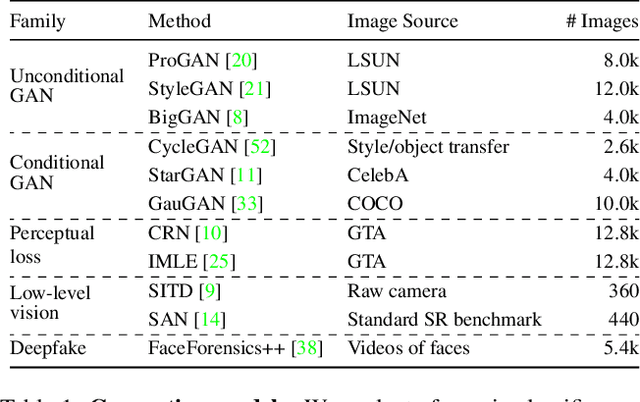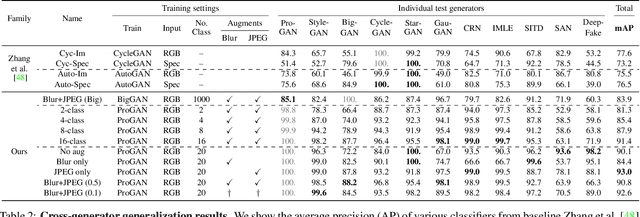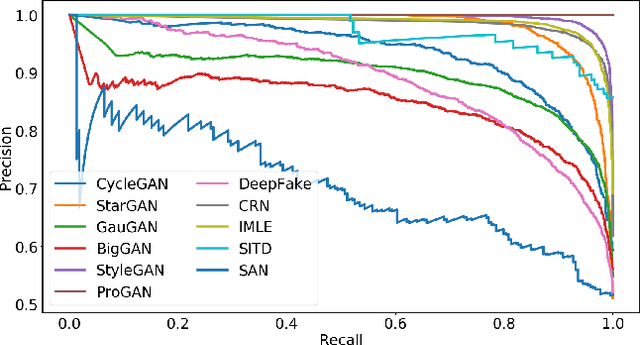CNN-generated images are surprisingly easy to spot for now
Paper and Code
Dec 23, 2019



In this work we ask whether it is possible to create a "universal" detector for telling apart real images from these generated by a CNN, regardless of architecture or dataset used. To test this, we collect a dataset consisting of fake images generated by 11 different CNN-based image generator models, chosen to span the space of commonly used architectures today (ProGAN, StyleGAN, BigGAN, CycleGAN, StarGAN, GauGAN, DeepFakes, cascaded refinement networks, implicit maximum likelihood estimation, second-order attention super-resolution, seeing-in-the-dark). We demonstrate that, with careful pre- and post-processing and data augmentation, a standard image classifier trained on only one specific CNN generator (ProGAN) is able to generalize surprisingly well to unseen architectures, datasets, and training methods (including the just released StyleGAN2). Our findings suggest the intriguing possibility that today's CNN-generated images share some common systematic flaws, preventing them from achieving realistic image synthesis.
 Add to Chrome
Add to Chrome Add to Firefox
Add to Firefox Add to Edge
Add to Edge